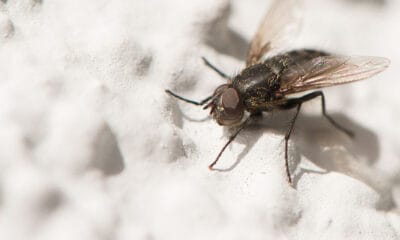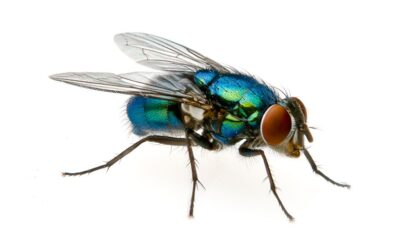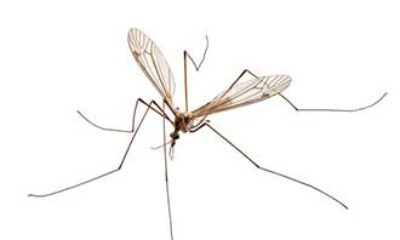HOW TO IDENTIFY IF YOU HAVE A PROBLEM WITH FLIES? House flies are one of the most common insects on the planet. They breed and feed in filth, including garbage, feces, and rotting or spoiled food. Poor sanitation and unsealed cracks in windows and doors can lead to house fly infestations.
 House flies live on a liquid diet
House flies live on a liquid diet
 They can taste with their feet
They can taste with their feet
 They can spread a range of diseases
They can spread a range of diseases
 Flies are able to see behind them
Flies are able to see behind them
 The lifespan of a fly isn’t that long.
The lifespan of a fly isn’t that long.

VARIOUS FLY SPECIES
FRUIT FLY
Fruit flies often infest homes with ripe, rotting, or decayed fruit and produce. They also enjoy fermented items such as beer, liquor, and wine. Fruit flies also may breed and develop in drains, garbage disposals, trash cans, and mop buckets.
Give us a call to sort any Fly infestations, use our contacts page.

DRAIN FLY / FILTER FLY
Appearance
Adult filter flies are tiny, around 2mm in width. They appear to be fuzzy, dark or greyish insects with the body and wings densely covered with hairs. The wings, which appear too large for the body, are held roof-like over the body when at rest giving a moth-like appearance.
Filter fly larvae are actually beneficial because they break down organic waste into water soluble compounds. Adult flies, however, are a nuisance. They cannot bite, but they may become so numerous indoors that they congregate at windows and around light fixtures, showers, bathtubs, sinks and floor drains.
The key to solving a filter fly problem is to find and eliminate the source—that is, the areas where excess moisture and organic debris have built up. If there are lots of adult flies inside a drain the drain is probably a breeding site.
Give us a call to sort any Fly infestations, use our contacts page.

HOUSE FLY
House Flies infestation?
Since they live in such close proximity to people, house flies are generally unwelcome. While usually just a nuisance, these pests can carry a variety of diseases harmful to both humans and pets. House flies pick up bacteria, fungi, and viruses and then spread these pathogens by contaminating food and water.
Several health problems can develop from house fly infestations. These include food poisoning, dysentery, and tuberculosis. Regular cleaning will limit areas where house flies are able to breed.
Give us a call to sort any Fly infestations, use our contacts page.

LESSER HOUSE FLY
As its name implies, the lesser house fly, also called the little house fly, is noticeably smaller than the standard housefly (Musca domestica). It is approximately 5 to 6 mm in length and yellowish in coloration. The lesser house fly’s thorax hosts three black stripes.
Females are attracted to decaying fecal matter as egg-laying sites and can be a particular nuisance in chicken houses and other livestock grounds. Their eggs are white and thin, measuring 2 mm in length. Maggots develop fully within five to seven days and enter the pupal stage. , During the larval stage, they feed ravenously on the material on which the eggs were laid. Lesser house flies require a period of nine to 14 days.
Lesser houseflies move slightly faster than other species and fly in jerky, darting patterns. Lesser house fly eggs are capable of floating and can be found resting on standing water. Like common houseflies, lesser houseflies are known carriers of pathogens resulting in human ailments, including typhoid, cholera, dysentery and anthrax. They pick up pathogens from fecal matter and other decaying material, and then transfer it to humans by landing on exposed food and other surfaces.
Give us a call to sort any Fly infestations, use our contacts page.

CLUSTER FLY
Cluster flies are 8mm long and are a dark grey colour, with small patches of gold hair on their back and long wings. Appearing in spring, cluster flies will begin to lay eggs outside and will hibernate in your home around nearing winter, around August time. To get rid of cluster flies you can use your vacuum cleaner, aerosol fly killer or call your local professionals who will be able to use smoke bombs or foggers for more effective results.
Methods for getting rid of cluster flies
There are many things you can do to remove cluster flies in a property, some are more effective than others but we have made a list of things you can do to remove your cluster fly infestation.
- Insect spray
- ‘Citronella’ fragrance wick
- Vacuum cleaner
- Sealing all openings around doors, windows, eaves, pipes, electrical sockets…
- Foggers (performed by a trained professional)
- Smoke bombs (performed by a trained professional)
- Electric fly killers
- Fly boxes
Make sure your home is tidy and clean, cluster flies love food and drink spills, stagnant water, open rubbish bins and pet excrement. If you’re aware of having a cluster fly issue, install fly screens over your windows, to prevent them from making their way inside.
Give us a call to sort any Fly infestations, use our contacts page.

BLUE BOTTLE FLY / BLOWFLY
Blowflies including Bluebottle and Greenbottle flies are large flies with either a black or iridescent metallic coloration. The presence of large numbers of blowfly is often indicative of the presence of a dead animal upon which they have bred, although sometimes it is the result of poor refuse management and collection.
Biology
Blow flies lay their eggs on dead animals, meat, fish refuse, and animal dung within which they feed until mature. The larvae then migrate to a dark dry place where they pupate and hatch into the adult fly. At room temperature (about 20 °C), the development from egg to adult can occur in 6-11 days.
Give us a call to sort any Fly infestations, use our contacts page.

CRANE FLY
- Color: Adult crane flies are black, red, or yellow in color, depending on species.
- Size: Crane flies may be mistaken at times for mosquitoes, but they are significantly larger with extremely long legs and have elongated faces.
- Wings: Crane fly wings may be transparent, brown, grayish-black or brownish-yellow. Some crane flies rest with extended wings, while others fold their wings flat.
- Females: Female crane flies have extended abdomens, which house eggs and are capped with an ovipositor. Although these ovipositors appear similar to stingers, they are harmless and are only used for reproductive purposes.
How Did I Get Crane Flies?
In the Autumn and spring, lawns near wooded areas or open fields often have a population of crane flies. In their mature form, the adult females lay eggs in grass. Dampness and heavy rainfall increase their numbers.
How Serious Are Crane Flies?
Only in their larval state do these pests cause any real damage. After they hatch, crane fly larvae eat grass crowns and roots, leaving large brown patches on lawns. As adults, the insects are mostly a nuisance.
Mature crane flies often annoy residents when they fly into homes and bump against the walls or ceilings. Although they look like giant mosquitoes, the pests do not bite people or feed on blood. Since adult crane flies only live a few days, an entire generation may perish at the same time, creating foul-smelling piles of dead insects on sidewalks and driveways.
